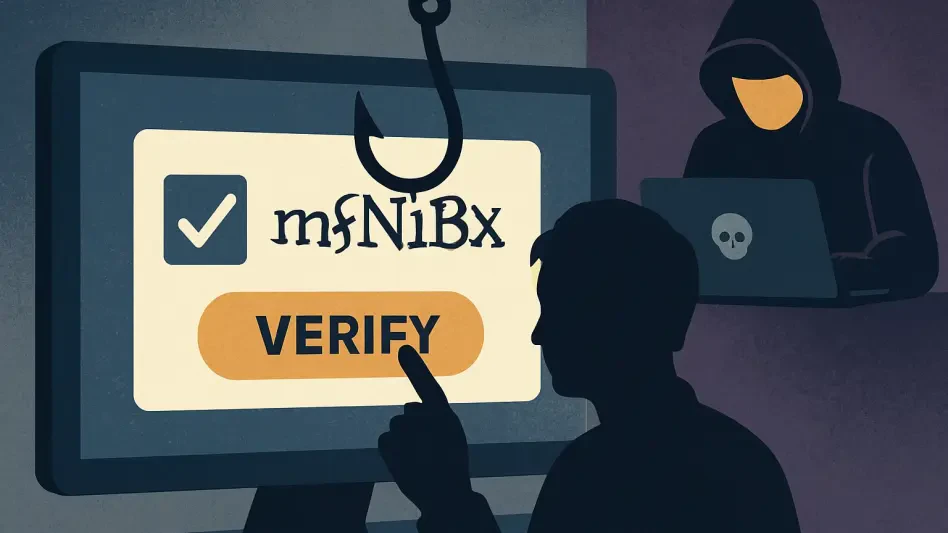Phishing campaigns have always been a formidable threat in the cybersecurity landscape, continually evolving and adapting to outsmart protective measures. The recent implementation of advanced browser protections by major browsers like Chrome, Edge, and Firefox has significantly reduced the efficacy of phishing attacks targeting Windows users, revealing a sophisticated level of adaptability among cybercriminals. Initially, the campaign capitalized on fake Microsoft security alerts to deceive Windows users. These attackers leveraged compromised websites to display warnings that falsely claimed the computer was compromised. Adding to the illusion of credibility, the phishing pages were hosted on Microsoft’s Windows.net platform, a tactic that allowed them to evade security tools that rely on domain reputation.
In 2025, the introduction of new anti-scareware protections by major browsers led to a 90% drop in the success rate of these phishing campaigns against Windows users. This achievement, however, did not spell an end to the threat. Instead, it marked the beginning of a new phase in the evolution of phishing strategies. Faced with reduced effectiveness against Windows users, attackers swiftly shifted their focus to Mac users, who were not yet protected by these new measures. This new wave of phishing attacks against Mac users employed similar visually deceptive tactics specifically designed for macOS and Safari users while continuing to use the Windows.net infrastructure to maintain an appearance of legitimacy.
Phishing Strategies Against Windows Users
Before the implementation of the latest browser protections, phishing campaigns predominantly targeted Windows users by creating fake security alerts. These alerts were designed to appear as legitimate notifications from Microsoft, featuring alarming messages that claimed the user’s computer was compromised and locked. This psychological manipulation aimed to create a sense of urgency, compelling users to act quickly. The attackers prompted the users to enter their Windows credentials, providing the phishers with access to sensitive information.
The credibility of these phishing pages was bolstered by their hosting on Microsoft’s Windows.net platform, which helped them evade detection by security tools. This tactic exploited the domain reputation system used by many cybersecurity solutions, where trusted domains are less likely to be flagged as malicious. By disguising the phishing pages as part of a legitimate Microsoft infrastructure, the attackers were able to bypass many of the conventional security measures that might have prevented the attack.
However, the new anti-scareware protections introduced by browsers in 2025 marked a turning point. These protections, integrated into major browsers, employed advanced algorithms to detect and block scareware tactics. The result was a dramatic 90% reduction in the effectiveness of phishing attacks targeting Windows users, forcing cybercriminals to reassess and shift their strategies.
New Threats Targeting Mac Users
In response to the heightened protections for Windows users, cybercriminals have redirected their efforts towards Mac users, who have not benefited from the same level of browser protection enhancement. The transition was swift, with attackers developing phishing strategies tailored for macOS and Safari users. These attacks maintained the use of the Windows.net infrastructure to ensure the continued exploitation of domain reputation, attempting to bypass security measures in a similar manner to the Windows-targeted campaigns.
The phishing pages crafted for Mac users were visually deceptive, mimicking official Apple notifications and websites. This approach aimed to exploit the trust Mac users place in Apple’s security and ecosystem. By presenting themselves as legitimate Apple security alerts, the attackers hoped to create a sense of urgency and authenticity, prompting users to enter their Apple ID credentials. This shift in focus highlighted the adaptability of phishing campaigns in the face of changing cybersecurity landscapes.
Despite the different operating systems and user bases, the fundamental tactics remained consistent: leveraging legitimate-looking infrastructure to create credible phishing pages and manipulating users through fear and urgency. This underlines the importance of extending protective measures across all platforms to safeguard against evolving threats.
The ability of phishing schemes to rapidly adapt and target different user groups in response to enhanced security protocols is a troubling trend. It emphasizes the need for continuous advancements in cybersecurity measures. As one group of users becomes more protected, another potentially becomes a target.
A Call for Comprehensive Security Measures
Phishing campaigns have long posed a significant risk in cybersecurity, constantly evolving to bypass protective measures. The recent rollout of advanced browser protections by leading browsers like Chrome, Edge, and Firefox led to a dramatic reduction in the success of phishing attacks aimed at Windows users, demonstrating cybercriminals’ ability to adapt. Initially, attackers exploited fake Microsoft security alerts to trick Windows users, using compromised websites to display false warnings claiming their computers were compromised. These phishing pages, hosted on Microsoft’s Windows.net platform, managed to evade security tools relying on domain reputation.
By 2025, the introduction of robust anti-scareware protections by major browsers resulted in a 90% decrease in the effectiveness of these phishing campaigns against Windows users. This milestone didn’t end the threat, but instead sparked a new phase in phishing tactics. With their success against Windows diminished, attackers turned their attention to Mac users, who lacked similar protective measures. The new phishing wave targeted macOS and Safari users with deceptive tactics crafted specifically for them, leveraging the Windows.net infrastructure to retain legitimacy in their deceit.







